How to Design a School for Belonging
Key Points
-
It’s crucial school leaders consult students about the kind of school they want to attend. If students have a say, they’re more likely to feel like the space belongs to them and that they belong there.
-
Remember, the environment is not neutral. Our spaces influence how we feel from moment to moment.
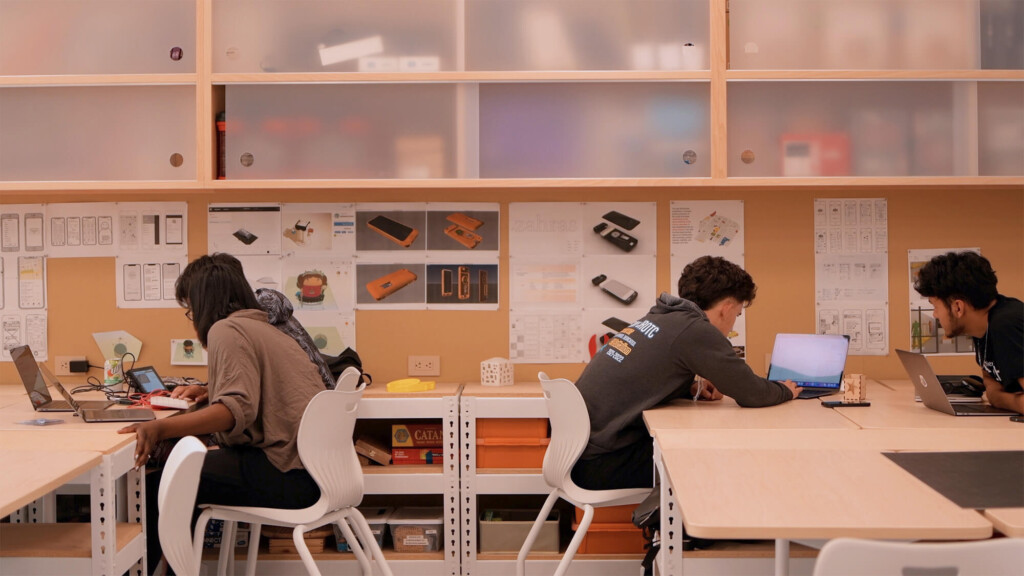
By: Danish Kurani
Here’s an alarming statistic: in a 2019 survey of 47,000 high school students, just 40% of students said they felt like “a real part of this school.” That means 60% of students show up to school each day feeling, to some degree, like outsiders. Given the intense isolation many students have felt during and after the COVID-19 pandemic, it’s hard to imagine this lack of belonging has gotten any better. In fact, it’s likely gotten worse.
So, what happens to those kids? Research shows that a lack of belonging at school causes students to disengage. Their performance suffers. And they come to believe that certain futures aren’t available to them.
We’ve seen cultural movements around diversity, equity, and inclusion that are meant to help people feel included. But, is merely being included enough for a child, or does she need to feel like she belongs and is a valued member of her community?
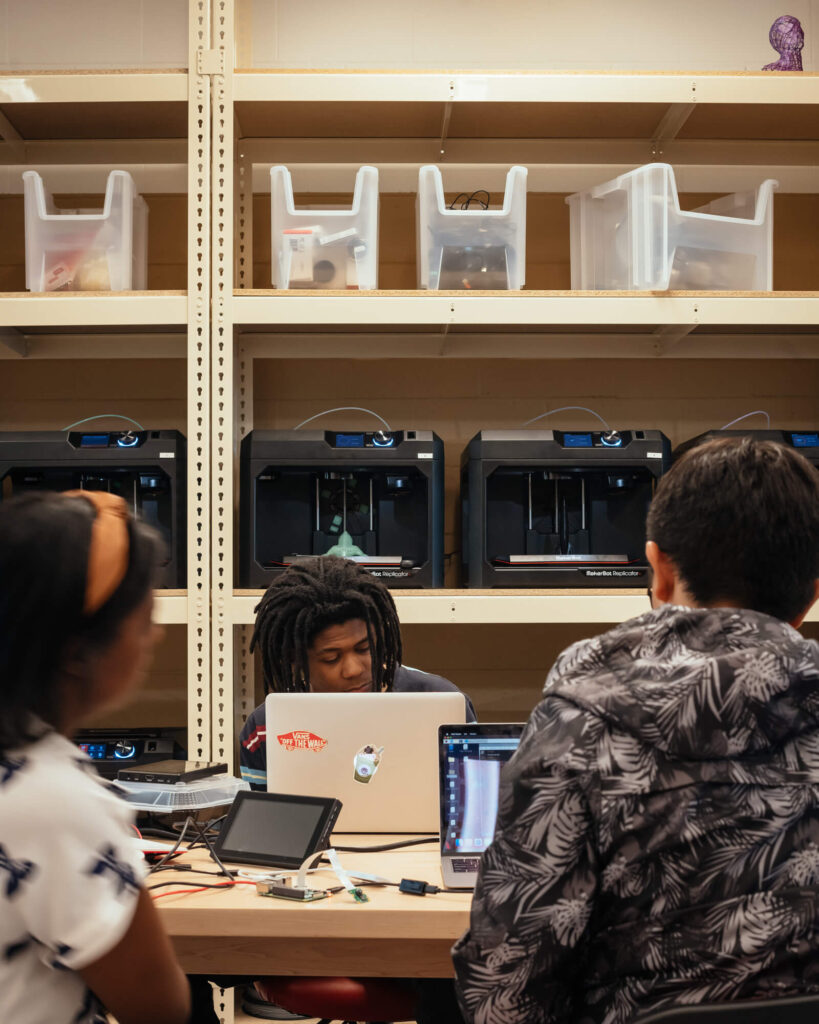
Just about every school experience improves when students feel like they belong. According to one 2022 review, students become more confident, motivated, and engaged overall. That means they’ll speak up more confidently in class, ask more questions, work better with their classmates, and perform better academically. Ultimately, if you can model a place of belonging for children as they’re growing up, they’re more likely to become adults who create this kind of world for others—and isn’t that the highest goal education can achieve?
Most school leaders probably think they already do things to make students feel like they belong. But, this isn’t the case. Painting your walls blue and yellow just because those are your school colors won’t make students feel like they belong. Chances are, it will just give them headaches. To create a school of belonging, an institution’s leaders need to consider what really gets people of any age to feel connection: ownership, representation, and community.
Exceed Student Expectations
Not long ago, I designed a tech lab in Oakland, California for students to use after school and on the weekends. It’s called Code Next. On a typical Friday afternoon, Code Next is relatively quiet. There’s the low humming of a laser cutter as a student etches a piece of wood, and a few 3D printers whirring in the makerspace. Pretty soon, a handful more students filter in. Without hesitation, they grab a laptop and a pair of headphones. Then they grab a few other essentials: a bottle of Vitamin Water, a pack of Oreos, and a piece of Swiss chocolate. They get down to work.

Credit: designed by architect Danish Kurani
The work that gets done at Code Next is permissionless. Students don’t need to ask anyone if they can work on certain projects or use whatever materials and tools they need. They just do it because they feel comfortable in that space. When the Code Next team at Google asked me to design a learning lab where students would feel a sense of belonging, I knew that meant students had to feel like the space was theirs.
I designed the entire lab to feel accessible, where all of the supplies and fancy equipment were in reach, not hidden or locked up in cabinets. Students have front-door access and show up whenever they please. Furniture is movable and modular, so kids can create the workspaces that make sense for them. The space is theirs, and it’s in that sense of ownership where we most feel like we belong.

Credit: designed by architect Danish Kurani
Within weeks of Code Next’s opening, a student told me, “The design of the lab really makes it feel like a workspace for engineers. You really feel that engineering feeling going through your body. It really helped me understand what I want to pursue in the future.”
A staff member shared, “The space is so cool, and open and fun. It kind of feels like a playground but in an educational way. And that’s kind of the best part — it motivates you to say ‘What can I learn?!’ We have students come on their lunch breaks or after school even when there’s no programming.”
Ask Students for Input So They Can Make it Their Own
It’s also crucial that school leaders consult the students themselves about the kind of school they want to attend. If students have a say, they’re more likely to feel like the space belongs to them and that they belong there.
An example of this came from the City Neighbors High School in Baltimore, Maryland. When it opened in 2010, the school did something fascinating. They let students design the cafeteria. In fact, they asked students, “If you could have the all-time coolest cafeteria for your high school, what would it look like?” The kids came up with a long wish list: black leather couches, a stage with a piano, pub-sized tables, and booths. And the school gave it to them!

Credit: Bobbi Macdonald
This act alone, of involving students in the design process, makes students feel like it’s partly their space. This leads to feelings of belonging, in the same way a child would feel more at home if their parents let them design their living room.
City Neighbors did something else interesting to break down the barrier between students and teachers, which led to greater belonging. In the cafeteria, all around the walls, they put up framed photos of the students and staff from when they were young children. For example, there’s a photo of the school principal when he was a young boy with his big brother at the kitchen table. To the students, this humanized their teachers. It made it easier to connect with them since they could see how the faculty was once just like them—that they too used to love video games or playing pranks with their siblings.
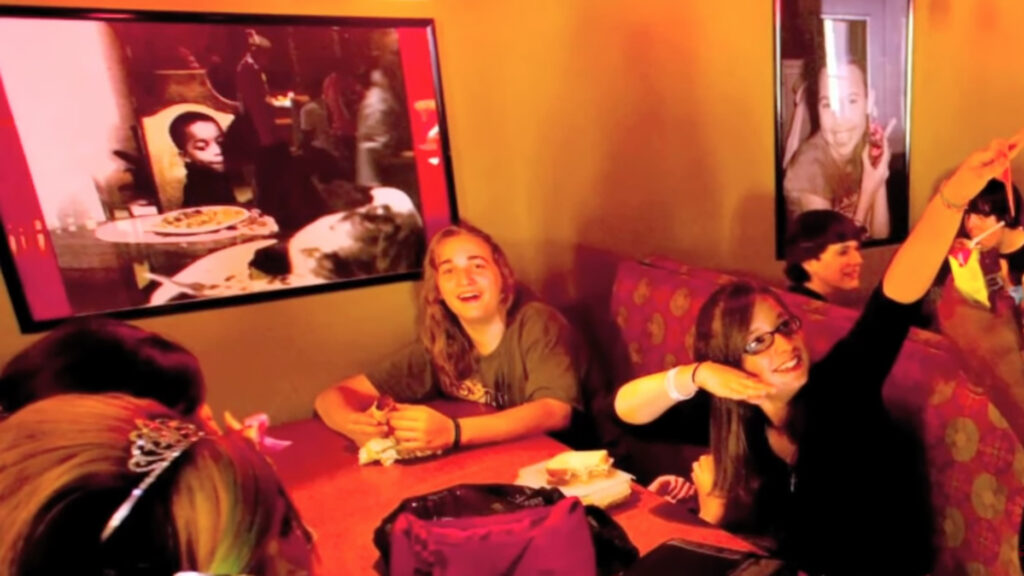
Credit: Bobbi Macdonald
Once it was easier to form these relationships, students started to feel like they belonged, because they truly knew one another. They became a part of a community.
Use Representation to Help Students Dream Big
Lastly, a way to create a sense of belonging is through seeing the space as a place “where people like me succeed.” A couple of years ago, I got the chance to design a campus for Tech Exchange. It’s a program where university students from HBCUs and Hispanic Serving Institutions spend a year studying at Google’s headquarters, a place where (like many tech companies) Black and brown faces are noticeably sparse.
To help these college students feel greater belonging, all over the campus I plastered billboards of successful Black and Hispanic engineers who went to the very same universities that these students were coming from. Walking around, students see billboards of successful people of color. They see people who came from where they came from and made things happen—that even though they don’t look like Elon Musk or Mark Zuckerberg, they belong on this campus and in the tech world because people of color can and have achieved great things.
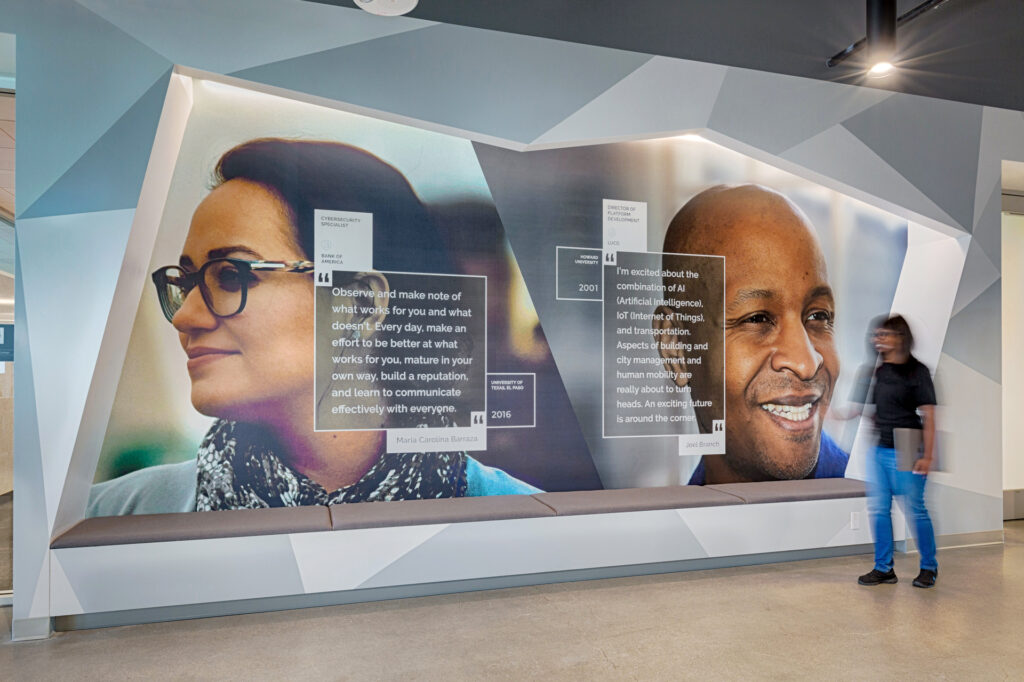
Credit: designed by architect Danish Kurani
I also located the billboards so they’d be seen by Google’s hiring managers. If these hiring managers saw success stories of Black and brown people, maybe they’d see more potential in these kids. They would look at them differently, and even treat them differently—like they belonged as much as students from Stanford or MIT.
This way, students can enjoy more upward mobility with help from adults in power who also believe that the students belong and feel compelled to support their success.
Inclusion Isn’t Enough
While it’s important that no one feels excluded at school, that should be the bare minimum. As education leaders, the real goal should be to make everyone feel like they belong. People should look forward to coming to school.
The way to do that is to create experiences where teachers interact more meaningfully with students. How much agency you give to students makes a difference. And whether they see themselves in that world and have a say in creating it, too, also makes a big difference.
Remember, the environment is not neutral. Our spaces influence how we feel from moment to moment, week to week, year to year. If six out of ten students are saying they don’t feel like they belong, that means they’re counting on their teachers, community leaders, and parents to fix that. They are counting on you to roll up your sleeves and create a place where they do feel like they belong.
Danish Kurani is an architect and created the Baaham design philosophy. In 2021, Fast Company named him one of the world’s Most Innovative Architects.




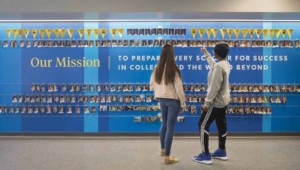

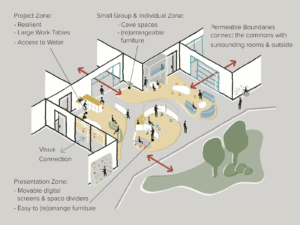
Pam Moran
This is such intelligent learning and community design from beginning to end- the biggest challenge I’ve seen in working in my own former district and now across the U.S. to imagine spaces for learning and living? How do staff make the changes essential to supporting young people to make use of space across a continuum of experiences, relationships, and environments? What deep change must be created to codesign learning w young people to maximize the potential of space as learning and living tools? How do we both morph and sustain commitment to using space as a facilitator of learners’ voices, agency, and influence? Your focus on the full picture of space uses not just initial design is fresh and inspiring!